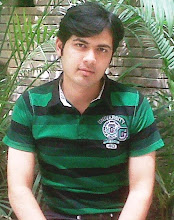
 While a country like China devised practical ways to deliver healthcare to rural populations by deploying its band of ‘barefoot doctors’ from the 1960s in a transitional phase, and then went on to expand full-fledged medical education facilities that enabled national coverage to a great degree, chronic shortages of doctors in rural India six decades after Independence remain a worry. The allopathic doctor-patient ratio is a dismal 1:1,722. Nevertheless, the Med ical Council of India’s proposal for a three-and-a-half-year course leading to a diploma in Bachelor of Rural Medicine and Surgery (BRMS) to produce a class of allopathic practitioners who hail from rural areas and will serve in notified rural areas may turn out to be a cure worse than the disease. Chhattisgarh’s experiment with a controversial three-year medical course (introduced in 2000 and scrapped in 2004) should provide a cautionary tale. The key question is: should rural folk be short-changed when it comes to the education, training, and calibre of medical practitioners?
While a country like China devised practical ways to deliver healthcare to rural populations by deploying its band of ‘barefoot doctors’ from the 1960s in a transitional phase, and then went on to expand full-fledged medical education facilities that enabled national coverage to a great degree, chronic shortages of doctors in rural India six decades after Independence remain a worry. The allopathic doctor-patient ratio is a dismal 1:1,722. Nevertheless, the Med ical Council of India’s proposal for a three-and-a-half-year course leading to a diploma in Bachelor of Rural Medicine and Surgery (BRMS) to produce a class of allopathic practitioners who hail from rural areas and will serve in notified rural areas may turn out to be a cure worse than the disease. Chhattisgarh’s experiment with a controversial three-year medical course (introduced in 2000 and scrapped in 2004) should provide a cautionary tale. The key question is: should rural folk be short-changed when it comes to the education, training, and calibre of medical practitioners?The Bhore Committee Report of 1946 provided a highly commended blueprint for a modern public health delivery system and the training of personnel. It envisaged the concept of a ‘basic’ doctor who would be central to the delivery of primary healthcare; he or she would be put through five-and-a-half years of sound medical education. An alternative cadre of Licentiates (LMPs) who underwent a three-to-four-year course in medical schools was abolished after deliberation. But the Committee recommended the setting up of more medical colleges, with all available resources directed at the production of one type of doctor with the optimal level of training over five-and-a-half-years. The expectation was that medical education would match population growth and expanding healthcare needs. The number of MBBS seats in India is less than 31,000 today which is far from adequate. There were 17,654 medical degree-holders available at the time of the Bhore Committee survey to serve a population that was less than a third of what it is today and they were less spread out. The challenge before the government is straightforward: it is to increase the MBBS-level intake manifold, rationalising the process of setting up medical colleges — and cleansing the clearance system of multi-point transactional corruption. A package of well-considered and sustainable measures, including attractive incentives, to ensure that a significantly greater number of doctors work in the countryside, must be put in place .Narrow-minded resistance from within the medical fraternity should not be allowed to stand in the way.
Source:The Hindu

0 comments on "Doctors In The Villages"
Subscribe in a Reader
Post a Comment